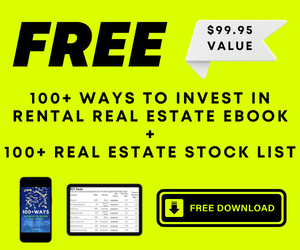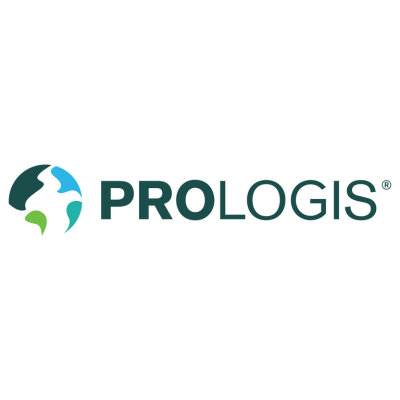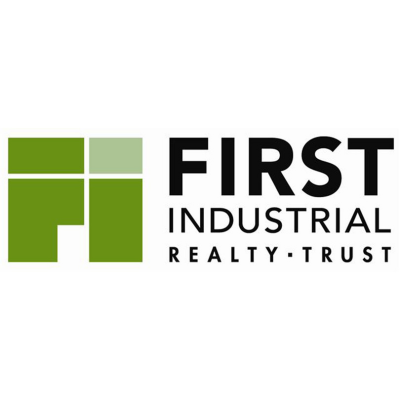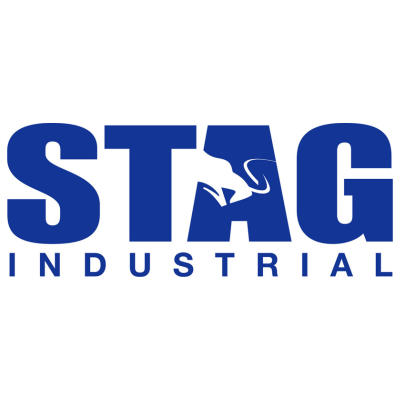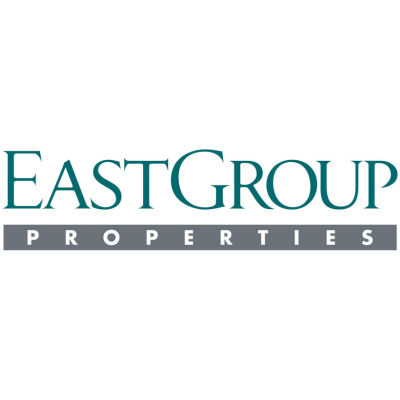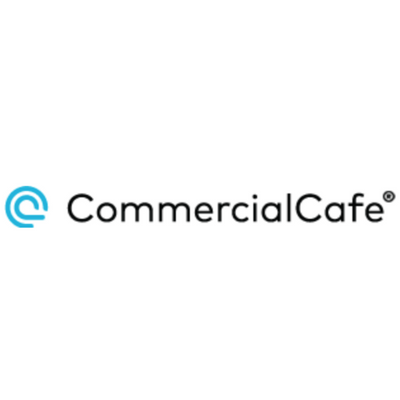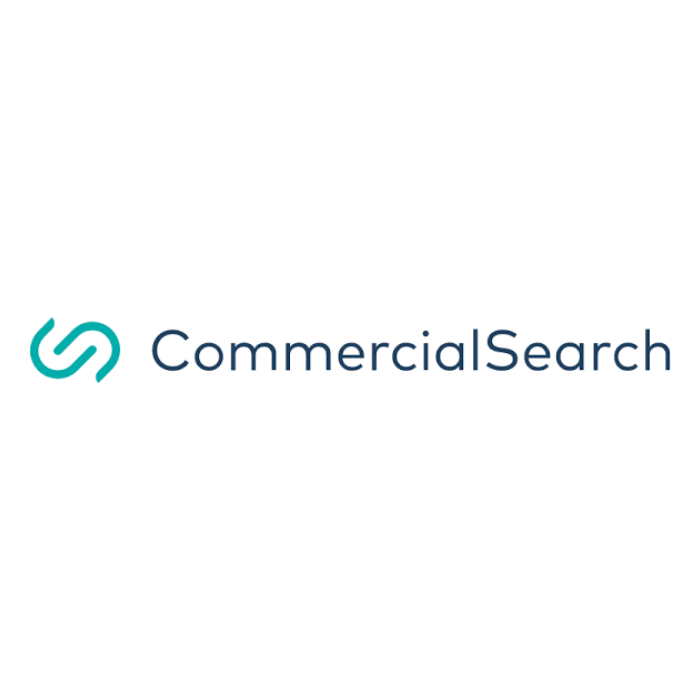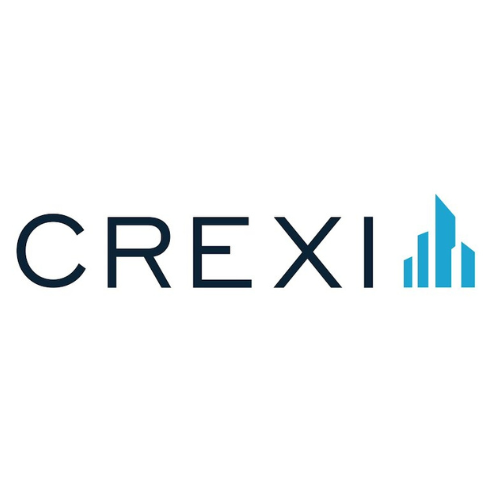Last Updated: March 2024

While often overlooked by novice investors, industrial real estate is one of the most important types of rental real estate in modern societies. From the food you eat, to the clothes you wear, and basically every item in your home or favorite retail store, has been either produced or stored in an industrial building at some point. Because this sector is so important to the framework of our society, it is easy to see the influence that industrial properties have on our everyday lives and also what makes them some of the most valuable properties for rental real estate investors.
What is Industrial Real Estate?
Industrial Real Estate Definition
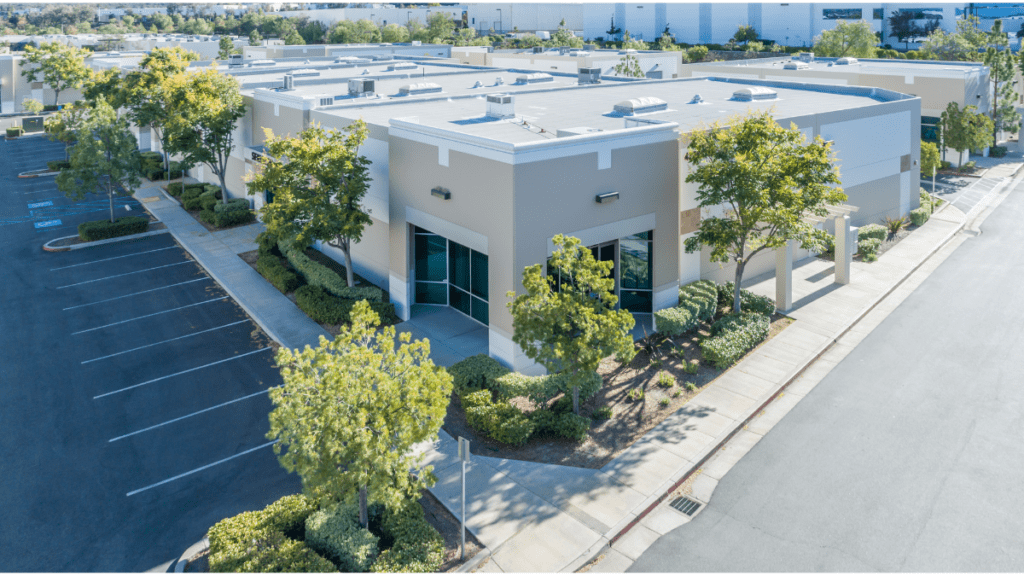
All land and buildings which accommodate industrial activities including production, manufacturing, assembly, research & development, warehousing, research, storage, and distribution.
Industrial Real Estate Explained
When most people think of industrial real estate, they naturally envision a manufacturing plant pumping out clouds of smoke or a large warehouse building with an assembly line of workers assembling or packing items. While both are possibilities of what an industrial property can be, industrial properties extend much further into many other types of properties and uses. From manufacturing, storing, or facilitating in the transportation of common frozen food, toilet paper, building materials, and virtually any other item you can imagine, all was either produced or stored in an industrial building at some point. When executed correctly, investing in industrial real estate can be one of the most lucrative endeavors.
5 Different Types of Industrial Real Estate
The term industrial real estate is an umbrella term to describe the general property type, but there are actually many different subtypes within the sector. They each can range in size, location, and use of the tenant occupying the space. Below we take a look at the most common types of industrial real estate.
Warehouse



Warehouses are facilities that are primarily used for storage or distribution. They are often the largest type of industrial property by square footage to accommodate large amounts of goods and merchandise. Warehouses are usually strategically located within close proximity to major highway systems that can accommodate easy accessibility for frequent visitation of transportation trucks. Warehouses are usually located within industrially zoned land that is often outside-of or on the outskirts of metropolitan areas. Warehouse tenants are usually distributors (i.e. middlemen shippers for product manufacturers), manufacturers (i.e. established brands that distribute their products directly to retailers) or direct to consumers (i.e. product manufacturers that distribute their product directly to consumers).
Flex Space
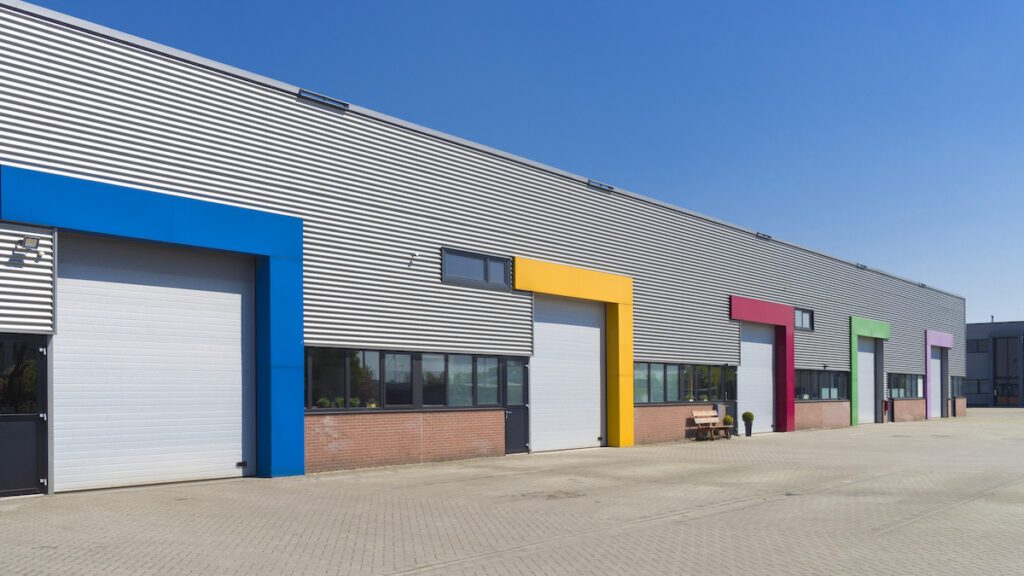


Flex space refers to an industrial property that can be used in a variety of ways. Since industrial buildings are usually large unfinished shells, flex spaces can usually be modified and normally includes a mix of both industrial warehouse space, office space, showroom space, and more. Flex spaces range in size from small spaces to accommodate mom-and-pop tenants, to very large properties that can accommodate companies with a national presence. They are usually located within industrial parks or other campus-like settings among other industrial properties. Flex space tenants are usually businesses who desire to have their entire operation under one roof, for example warehousing products, a customer showroom, and office administration. Below we take a look at a few different types of flex space: Showroom and Research & Development.
Showroom
Showrooms are a sub-type of flex space industrial properties where the space encompasses a combination of offices, warehouses and showrooms. For most industrial property showrooms, at least half the space (50% of gross area) is used for showcasing and selling products. A very common type of industrial property showroom is a car dealership.
Research and Development
Research and Development (R&D) properties are a sub-type of flex space industrial properties where a company uses the property to create, test and improve new and existing products. In a research and development space, you can often find laboratories, office space, testing spaces and light manufacturing or assembly areas. An example of a research and development facility would be a business that researches, develops, and tests its own proprietary products, to potentially be manufactured and sold at mass scale at a later point in time.
Manufacturing
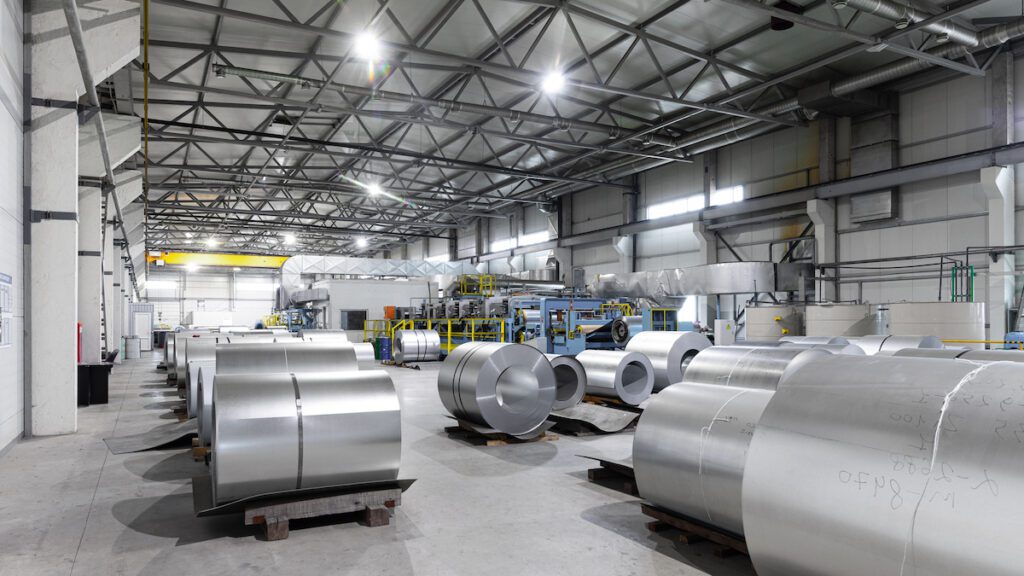


A manufacturing property is one where goods are produced and assembled. Manufacturing properties can vary greatly depending on the product that is produced or assembled onsite. Below we take a look at the two types of manufacturing buildings: heavy manufacturing and light assembly.
Heavy Manufacturing
As a type of manufacturing property, heavy manufacturing refers to industrial properties that are heavily customized with machinery for the manufacturing of heavy-duty goods and materials.Heavy manufacturing properties tend to be large in size, ranging in the hundreds of thousands into millions of square feet. They usually contain heavy-duty equipment, three-phase electricity and abundant loading dock space. Due to the use of heavy machinery, chemicals, and power requirements, heavy manufacturing properties are usually located away from residential areas containing single family and multifamily residences and in specially zoned industrial areas of a city.
Light Manufacturing & Assembly
As a type of manufacturing property, light manufacturing and assembly refers to industrial properties that are used to produce generally smaller and more-finished consumer goods for end users. Light manufacturing properties are usually simpler in comparison to heavy manufacturing properties, and often include onsite storage, product assembly, and office space. Light manufacturing and assembly industrial properties are still required to be in specially zoned industrial areas within a city or municipality, however this use is less restrictive than heavy manufacturing as there is usually less chemicals or other potentially harmful substances onsite.
Cold Storage



Cold storage facilities, also known as Public Refrigerated Warehouses (PRW), is a type of industrial property that facilitates the refrigerated warehousing and storage of perishable food and products. As consumer demand has risen for fresher food and speedy grocery delivery, the demand for cold storage has increased significantly. Cold storage facilities are usually strategically located throughout the country with preference to coastal ports and large population cities. There are 2 major types of cold storage facilities:
- Private Warehouses: Warehouses that are constructed and/or owned by the same enterprise that owns the merchandise stored at the facility.
- Public Warehouses: Warehouses that are operated as an independent business that offers various services such as handling, storage and transportation for a fixed or variable fee and is charged by the pallet.
Data Centers



Data centers are specialized properties that house the technological hardware and related equipment used to store, process, distribute, and provide access to large amounts of data. With almost all business operations being heavily dependent on internet connectivity, the role of the data centers is more akin to an infrastructure provider rather than a secondary service. Data centers are usually quite large in size, with spaces being at least one hundred thousand square feet in size, however the size of a data center is typically expressed in power capacity (i.e. megawatts) rather than square footage. Buildings are specially built for this use only with specific requirements such as high-security to prevent unauthorized access, reinforced flooring to support heavy equipment, specialized HVAC systems to prevent overheating, backup generators in case of power failure, and other specialized equipment. Data centers are located throughout the country with the most heavy concentration being in Northern Virginia due to it being the birthplace of the internet (see Darpa – ARPANET) low utility rates, generous tax breaks and land availability.
The #1 Rental Property Newsletter
Once a month, we send out an exclusive Rental Property Market Update with top stories, current mortgage rates, building products, and more. No spam and unsubscribe anytime.


Industrial Real Estate News
- CoStar Group Acquiring Matterport Spatial Property Data Company in $1.6 Billion Deal


- Blackstone Acquiring Multifamily Owner AIR Communities for $10 Billion


- Property Meld and Lula Launch ‘Vendor Nexus’ Program


Industrial Real Estate Amenities
Although business needs vary substantially, most tenants occupying industrial spaces are typically seeking the same amenities in an industrial property. Below we take a look at the most common types of amenities found in an industrial property.
Loading Docks


A loading dock is an elevated platform at the shipping or delivery door of a building. The larger the building, the greater number of loading docks there are. They are usually situated at the same height as the floor of a shipping container on a truck or railroad car to facilitate easy loading and unloading.
Ceiling Heights
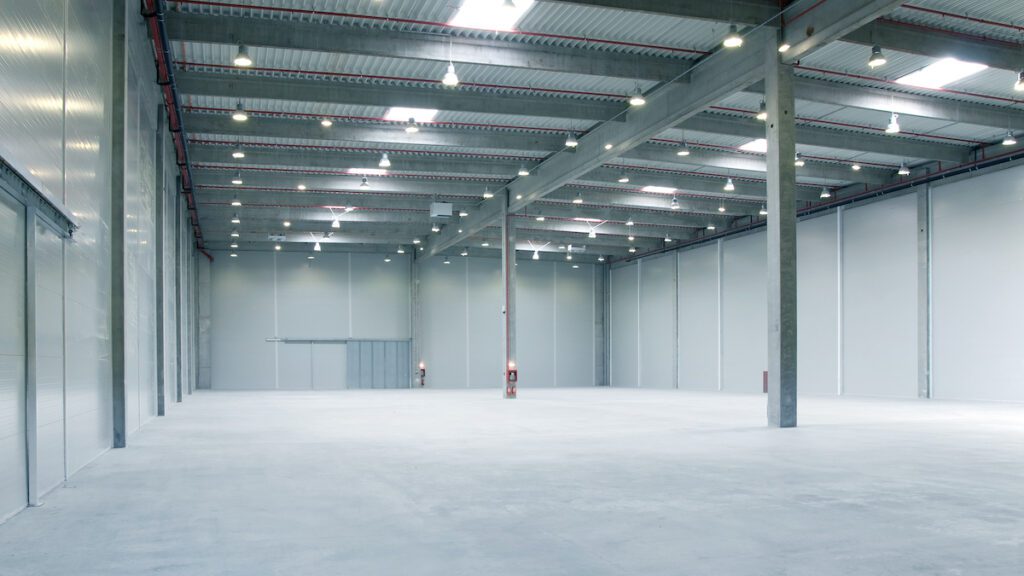

Ceiling heights are a crucial factor in the usability of an industrial property, especially in warehouses. Ceiling heights are defined as the distance from the floor to the inside overhead upper surface of the room. Clear Height is an industry term that refers to the usable height to which a tenant can store its product on racking. In modern industrial buildings, clear heights range from 32 – 40 feet.
Industrial Property Classes
Much like other types of commercial real estate, most industrial properties can be broken down by classes. Below we take a look at the three most common types of industrial property classes.
Class A
Class A industrial properties are typically the best-in-class among its peers of similar properties. They are usually relatively new in age and built with top quality materials with desirable amenities sought out by top industrial tenants (e.g. high ceilings, new mechanical systems, transit-oriented location, etc.). Tenants occupying Class A properties are usually top-tier tenants such as publicly traded companies or well known major brands. Class A industrial properties are usually the most expensive for both investors and tenants, but also provide value to both by delivering higher income potential for landlords and lower upfront capital investment to properly outfit the space for tenants.
Class B
Class B industrial properties might not be the shiniest and newest properties in a particular market, but are sometimes just a new-ish building with limited features. They are usually secondary industrial properties that are still very functional and provide great value for industrial tenants who do not necessarily need the upgraded amenities found in a Class A. Class B industrial properties are priced below Class A for both investors and tenants. For investors, the lower price point of Class B properties provides an opportunity to gain access to the asset class at a discounted price with the option to later convert it to a Class A as a value add opportunity. For tenants, Class B properties provide tenants with a well maintained space at a reasonable price point.
Class C
Since industrial properties are used solely for the purpose of manufacturing, warehousing ,or other related deliverable outcomes, they do not always need to be the nicest in appearance as long as they can successfully serve their purpose. This is where Class C properties come in. Class C properties are still functional, but are usually older (20+ Years), might show some signs of deferred maintenance, and might be located in a less desirable area. Class C properties can be great options for both investors and tenants. For investors, they can be an opportunistic value-add play to rehab up to Class A or B and thus increase rents. For tenants, they can be a low-cost functional space to operate their business out of if appearance is not a top priority.
Largest Industrial Real Estate Companies
Industrial real estate companies specialize in the development, acquisition, and management of properties designed for industrial activities. The largest industrial real estate companies focus on warehouses, distribution centers, and manufacturing spaces. Their operations significantly impact logistics, retail, and manufacturing sectors, particularly in strategically located areas that facilitate distribution and transportation.
Industrial Real Estate Calculators
Buy, Sell, and Lease Industrial Real Estate Online
Commercial real estate listing platforms across the internet attract millions of visitors every year and streamline the buying, selling, and renting process. Industrial real estate investors and tenants use these platforms to easily find available properties in almost any market. Those looking to sell or lease industrial real estate also benefit from these platforms by getting their listings in front of countless potential buyers and tenants.
Common Types of Industrial Tenants
Industrial properties attract a wide array of tenants, each utilizing the space for different purposes based on their specific industry requirements. Below we take a look at some of the most common types of industrial tenants that can be found in commercial properties:


- Manufacturing Companies
- Warehousing and Distribution Firms
- Logistics Companies
- E-commerce Businesses
- Construction and Building Materials Suppliers
- Automotive Industry
- Food and Beverage Processing
- Pharmaceutical Companies
- Textile Industry
- Recycling and Waste Management Companies
Search Rental Real Estate
Try searching out site for hundreds of rental property topics ranging from property management, investor tool reviews, investment research, and more.
Industrial Real Estate FAQ
What are Common Zoning Uses for Industrial Properties?
Industrial properties are typically designated within specific zoning categories that dictate their permissible uses. Common zoning uses for industrial properties include:
- Light Industrial (LI): This zone is for less intensive industrial operations, typically involving small-scale manufacturing, assembly, and warehousing. Activities in this zone usually have minimal impact on surrounding areas in terms of noise, pollution, and traffic.
- General Industrial (GI): This zoning is for more intensive industrial uses, including larger scale manufacturing, processing, and fabrication. Such areas might have more significant environmental and traffic impacts.
- Heavy Industrial (HI): Reserved for the most intensive industrial activities, like chemical manufacturing, heavy machinery production, and large-scale fabrication. These areas can have significant environmental impacts and are often located away from residential areas.
- Business Park / Industrial Park: These zones are designed for a mix of light industrial, office, and sometimes retail uses, providing a more controlled and aesthetically pleasing environment for a variety of business types.
- Warehouse and Distribution: Specifically designated for storage and distribution facilities, these areas are often located near major transportation routes for efficient logistics.
- Research and Development (R&D): These zones are for facilities focused on research and development activities, often with a mix of office and light industrial spaces.
What are Environmental Considerations in Owning and Renting Industrial Properties?
Owning and renting industrial properties requires careful consideration of environmental factors due to the potential impact on the surrounding ecosystem and compliance with regulations. Key considerations include managing and mitigating pollution risks, such as air and water pollution, and ensuring proper handling and disposal of hazardous materials. Additionally, property owners and tenants must be aware of and comply with environmental laws and regulations, which can include assessments for soil contamination, adherence to waste management protocols, and ensuring energy efficiency and sustainability practices.
More Types of Commercial Real Estate
About the Author


Ryan Nelson
I’m an investor, real estate developer, and property manager with hands-on experience in all types of real estate from single family homes up to hundreds of thousands of square feet of commercial real estate. RentalRealEstate is my mission to create the ultimate real estate investor platform for expert resources, reviews and tools. Learn more about my story.
Disclaimer: The information provided on this website does not, and is not intended to, constitute legal and/or financial advice. As such, all information, content, and materials available on this site are for general informational purposes only. Please review our Editorial Standards for more info.
